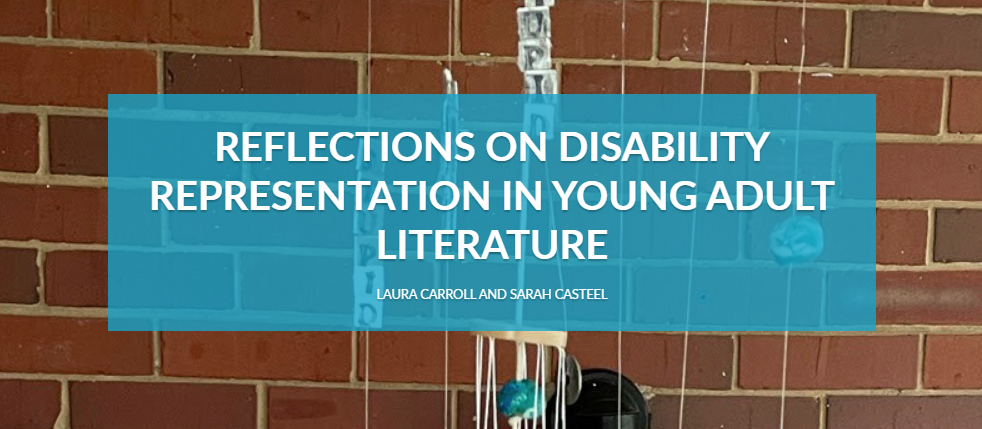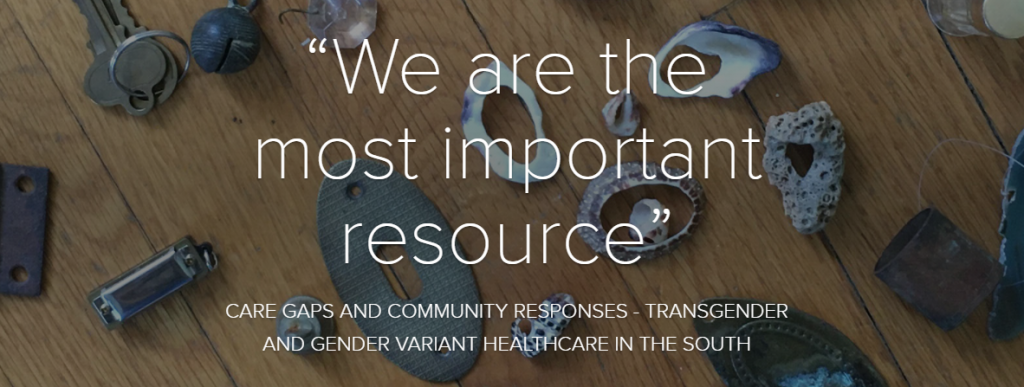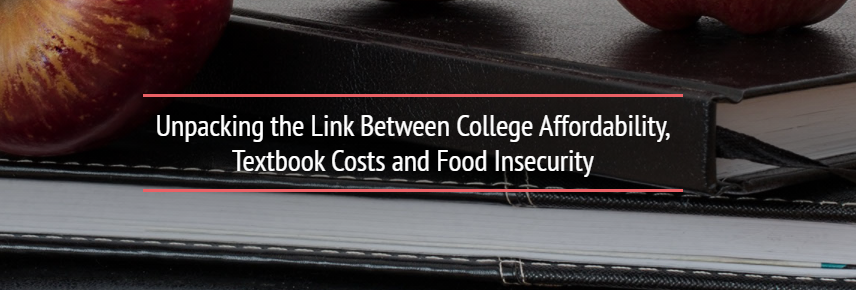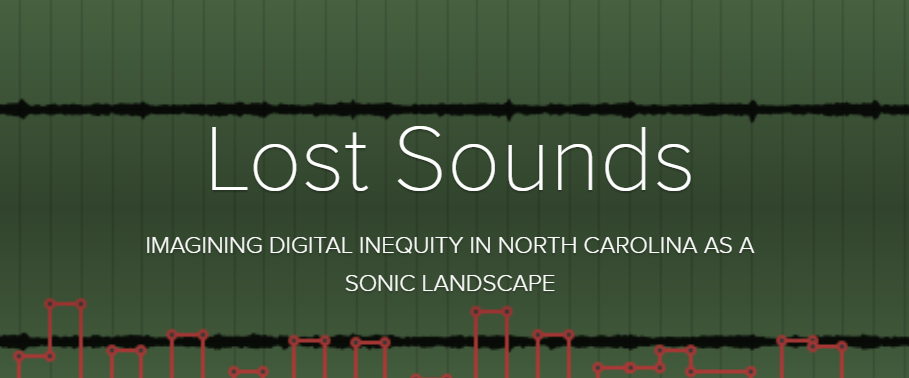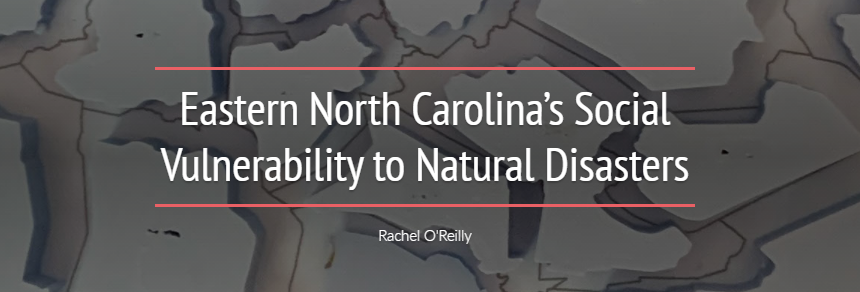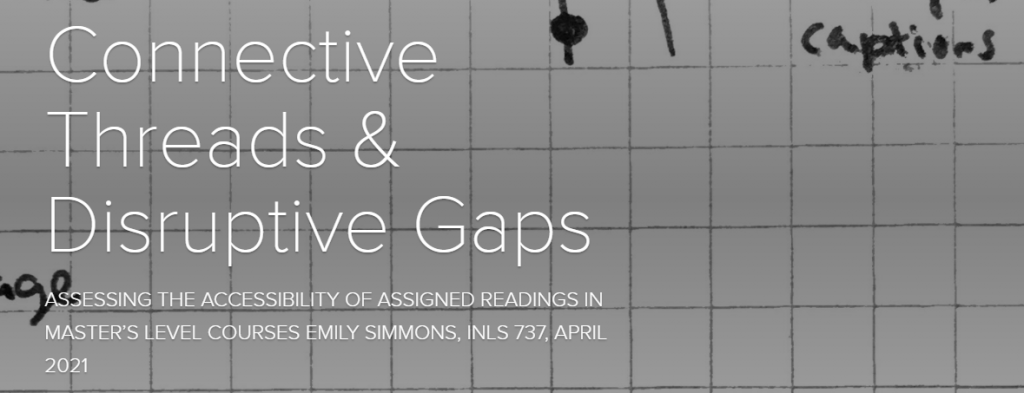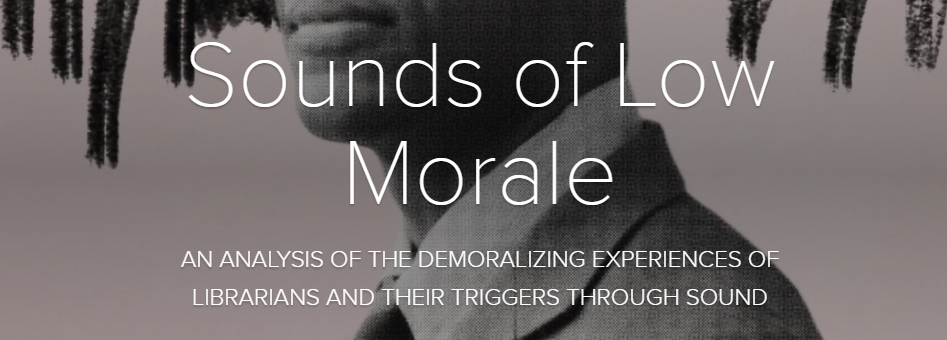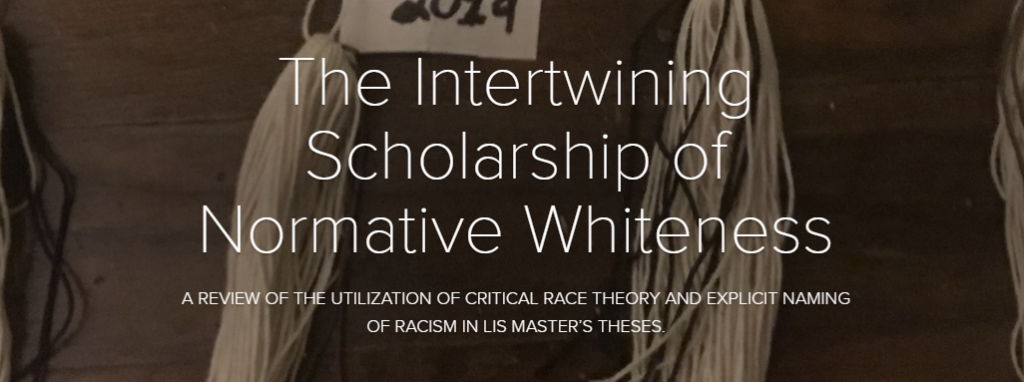Disproportionate Discipline: Examining the School Discipline Model with a Restorative Justice Framework
Megan Boland
Discipline referrals that lead to suspensions or expulsions result in students missing valuable class time and disproportionately affect BIPOC students- particularly male-presenting Black students- as well as students with disabilities. Using a foundation of critical race theory and equity literacy, this project will examine the issue of disproportionate school discipline and explore an alternative framework of restorative justice in schools.
Reflections on Disability Representation in Young Adult Literature
Laura Carroll & Sarah Casteel
Rudine Sims Bishop said that works of literature can act as mirrors, windows, and sliding glass doors through which we understand others and see ourselves. People with disabilities have historically been represented in literature as characters who deserve pity for their condition or praise for overcoming it. This project examines the use of ableist terms in five young adult novels and the total impact of the use of ableist language on young adult readers.
“We are the most important resource”: Care Gaps and Community Responses – Transgender and Non-Binary Healthcare in the South
Jess Epsten
Data shows that transgender and non-binary people in the south face far worse issues with health, mental health, and healthcare than cisgender people, illustrating serious gaps and problems within the medical system. At the same time, transgender individuals rely on each other to fill these gaps. This data physicalization project will explore the number of “official” resources that exist for trans people in the south and the under-studied reality of community, peer-to-peer, and online support.
Sundown Towns and the Value of Crowdsourced Data: A Data Physicalization
Karyn Hladik-Brown
Across the continental United States, there are communities with histories of exclusion of African Americans, as well as other minoritized groups, through zoning, police intimidation, and threats of mob violence, widely referred to as Sundown Towns. To show viewers the dangers that have and continue to exist for Black and other minoritized travelers in the United States, I took a road atlas and used white-out to remove every town, city, county, and community that was included in a crowdsourced dataset as a confirmed or probable Sundown Town.
The Gray in the Rainbow Flag: Death Literacy, End-of-Life Needs, and Resilience Among Older LGBTQ+ Adults
Katherine Laffoon
As the LGBTQ+ population in the U.S. ages, they face unique challenges as a community. They are the most likely to be without biological children to care for them in their old age. Most have had discriminatory experiences with healthcare, leading them to postpone reaching out to a doctor. Older LGBTQ+ adults are aware that they need to file documents such as wills and advance care directives, but these information needs are not met by our society which assumes that legal next of kin is the most appropriate to contact in case of emergency. As more of the US population ages, there will be an even greater need for creating compassionate communities where elders are not entirely reliant on having adult children. The LGBTQ+ community can lead the way in these conversations, with their rich history of chosen family social networks.
Unpacking the Link Between College Affordability, Textbook Costs and Food Insecurity
Kelly Miller & Jade Bruno
This presentation addresses the financial burden of rising textbook costs on college students and how it affects student well-being and success, particularly for marginalized and non-traditional students. The data physicalization demonstrates the limited resources many students have and the undue strain that textbook costs can have, such as increasing food insecurity. Through this presentation, we hope to emphasize the importance of library-led efforts to reduce textbook costs through the adoption of OERs and creation of textbook reserves programs.
Lost Sounds: Imagining the Digital Divide as a Sonic Landscape
Benjamin Newgard
This presentation will grapple directly with the shifting discourse on our country’s digital divide and its disproportionate effect on marginalized communities. Data extracted from a lengthy literature review, the FCC Fixed Broadband Deployment Map, NC OneMap, and other sources will be used to demonstrate how current discrepancies in digital access relate as much to issues of equipment availability as they do to those of competency and literacy. With this data laid bare, I will proceed to discuss their important ramifications on matters of equity in public health, socioeconomic status, and cultural representation, and how they help to render telecommunications and digital access as fields that have routinely neglected communities of color and lower income.
Eastern North Carolina’s Social Vulnerability to Natural Disasters
Rachel O’Reilly
This data physicalization will focus on social vulnerability scores to natural disasters in Eastern North Carolina counties. The artifact will be a 3D representation of vulnerability scores, with density, volume, and color as an indicator of higher or lower vulnerability to extreme weather. Vulnerability is defined as the potential to be harmed by natural hazards, and therefore social vulnerability is defined as the various social and geographic factors which make an area more or less vulnerable to natural disasters (Person, 2020; Tschakert, Wang, Baum, King & Zimmerer). Factors in an area’s vulnerability to natural disasters include age, education level, poverty ratio, and flood exposure.
Untitled (A Textile Exploration of Gender Representation in LGBTQ+ YA Novels, Pt. 1), 2021
Gavin Shelton & Esther Davis
This project utilizes a dataset compiled by young adult (YA) author Malinda Lo that examines the representation of various gender identities in LGBTQ+ YA literature published in 2018 to compare transgender and gender non-conforming (TGNC) representation in YA Literature with the percentages of LTBTQ+ youth in America who identify as TGNC. This mixed-media fiber arts artefact represents the incongruity between the proportion of TGNC youth within the LGBTQ+ Community as Represented in LGBTQ+ YA Literature and in a 2020 Survey from the Trevor Project.
Connective Threads & Disruptive Gaps: Assessing the Accessibility of Assigned Readings in Master’s Level Courses
Emily Simmons
Academia is infamous for being difficult terrain for disabled students. This project examines one way that ableism shows up in higher education: inaccessible assigned texts. From PDFs that are not screen-readable to video and audio “readings” that have no accompanying subtitles or transcripts, inaccessible materials leave a trail riddled with holes and gaps where content and learning should be.
Sounds of Low-Morale
Marisa Stockton
Kaetrena Davis Kendrick’s “The Public Librarian Low-Morale Experience: A Qualitative Study” explores the experiences and consequences of low-morale for librarians. These toxic cycles inhibit progress and systematic changes needed to create a healthy, diverse work environment. I’ve chosen to physicalize this data through sound to translate the emotionality of this issue. I will assign particular sound elements to low-morale experience triggers with their prominence in the track reflecting the percentages from the given data and the composition reflecting the different stages of the low morale experience.
The Intertwining Scholarship of Normative Whiteness: A Review of the Utilization of Critical Scholarship and Frameworks Around Race/Class/Gender in LIS Master’s Theses
n.d. Nihart
The reproduction of white normativity in LIS and libraries occurs readily in the absence of a social justice orientation that illuminates this whiteness, explicitly acknowledges the racism pervasive in the field and practice, and centers the knowledge and perspectives of marginalized voices. This data physicalization, looking at the presence of critical scholarship and frameworks around race/class/gender in LIS Master’s theses, represents the continuity of whiteness in the absence of significant disruption to the reproduction of this normativity.
_______Thy Neighbor: Examining & connecting present outcomes to government-sanctioned segregation in Durham County, NC
Alexandra Paz Cody
In the 1930s the Home Owners’ Loan Cooperation (HOLC) created what are now known as “redlining” maps for most major cities in the US. The use of these maps systematically eliminated opportunities for Black and Brown in cities such as Durham from accumulating generational wealth through homeownership. As a result, these areas still experience disparities in wealth, access to essential services, and well-funded schools. In this data physicalization, the historical disenfranchisement or privilege of each Durham neighborhoods will be paired with current outcomes (school performance data, property value, internet accessibility) in abstract collage to challenge how demographic data is often displayed in maps, gradients, and colors.

